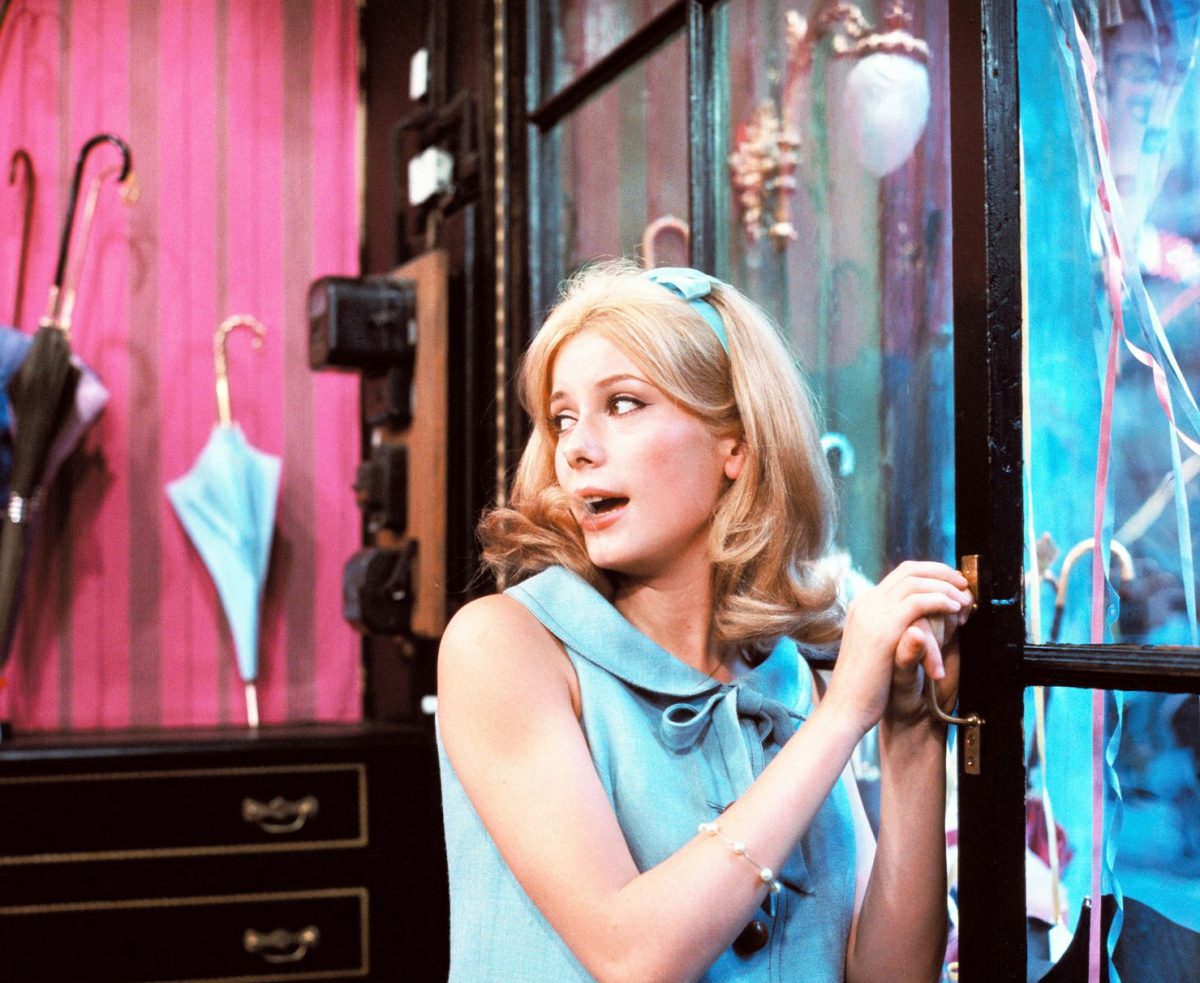The Umbrellas Of Cherbourg

Les parapluies de Cherbourg
Jacques Demy
France – 1964

Screenplay: Jacques Demy
Cinematography: Jean Rabier
Production: Parc Film Madeleine Films Beta Film
Language: French
Duration: 91 min
Color: Color
Synopsis: Act 1: in November 1957 sixteen year old Geneviève, who works in her widowed mother’s umbrella shop called “Les parapluies de Cherbourg”, and twenty year old Guy, a gas station mechanic, are madly in love and dream of getting married. Geneviève fears her mother will object, and besides, she probably already has someone with better prospects in mind; Guy worries about abandoning his ailing aunt. Act 2: in February 1958 Guy has been drafted to fight in Algeria and is expected to be gone for at least two years. Geneviève is pregnant, and rarely hears from him. Her mother urges her to accept a match with Roland Cassard, a diamond merchant who travels often but who is devoted to her whenever he is in Cherbourg. Geneviève still loves Guy but he is far away and Roland’s proposal may not last indefinitely. Act 3: in March 1959 wounded Guy is discharged and returns to Cherbourg. Wartime adversity has changed him, and he has to figure out what comes next. Geneviève has already married and moved away. He struggles with depression and anger, but eventually falls in love with Madeleine, a young woman who had been caring for his now-deceased aunt Élise. With his aunt’s inheritance, Guy fulfills his dream of opening a service station. Act 4: in December 1963, the story reveals what has become of our protagonists. Some years later, the conspicuously wealthy Geneviève, travelling with her daughter, Guy’s child, happens to stop at his service station. While the two have only a brief chat, there is much unspoken fondness and regret.
Notes:
At first glance, Jacques Demy’s best known work Les Parapluies de Cherbourg, bears little resemblance to his earlier, clearly New Wave features, Lola (1961) and La Baie des anges (Bay of Angels, 1963). To the casual observer, the all-song, operatic film might even appear as an anomalous blip in French film history, not obviously belonging to any particular tradition or movement. In terms of production values and other key characteristics, it would seem to hark back to the “Tradition of Quality,” which had dominated French screens in the 1950s and against which the French New Wave purported to rebel. Despite surface appearances, Les Parapluies de Cherbourg does conform to certain aesthetic and formal norms of the New Wave. Recent film writing offers a different look at this “Tradition of Quality” so frequently scorned on the pages of Cahiers du cinema, and brings out Jacques Demy’s importance as a figure of intersection between the two aesthetic currents.
David Bordwell and Kristin Tbompson suggest that, in terms of style, “the most obviously revolutionary quality of the New Wave films was their casual look.” Undeniably un-New Wave, at least at a first glance, Les Parapluies de Cherbourg indeed has nothing casual about it: thanks to Jean Rabier’s lushly luminous, Eastman-coloured cinematography, in concert with Bernard Evein’s deliciously decorated set design, the film all but visually ‘hums’ as a tonal symphony. Entire scenes display colour-coordinated characters, boldly and beautifully blending in with their surrounding environs and wall-papered interiors, in what often resemble Matisse and Dufy canvases, come magically and movingly to life, right down to a kind of vibrantly two-dimensional perspectivity. Here is a naturalistic world, constantly under the delectable threat of being engulfed by the surreal. By the time Genevieve and Guy, at the warbling’n’wailing height of mutually fervent adoration, begin actually gliding, and effortlessly floating along the backstreets of Cherbourg on the uplifting power of passion, it appears utterly physio-logical, the most natural thing on earth.
Yet, underneath the colourful and musical veneer, the film story undoubtedly falls within the New Wave cannon. Catherine Deneuve’s exquisitely anxious Genevieve and Nino Castelnuovo’s handsomely vulnerable Guy are initially idealistic, ordinary people who end up having to settle, due to pregnancy and enforced separation, for ordinary solutions to the always risky gamble of taking a main chance on love. And it’s precisely around this pivotal narrative point that Demy, with a wondrously crazy self-referential courage, introduces his own previous classic, Lola (1961), and virtually critiques that film’s heroic romanticism by bringing it directly into rather sobering perspective up against the limited choices open to this particular star-cross’d and socially compromised pair. Finally, in the film’s famously chilling last scene, with the snow falling (on all of us?), Demy and Legrand memorably counterpoint, through literal amplification, why, and how, this prospectively grand tragedy must stick (tragically?) to the minor key, played out in most of our human lives. While Demy’s openly acknowledged, inspirational mentor, Ophüls, might appreciate the neatly existential ‘realities’ of such a denouement, would his own dazzlingly diamond-hard diegetic universe ever match this peculiarly un-mysterious, un-radiant conclusion to a love story told like a song?
Notes adapted from Hill, Rodney. “The New Wave meets the tradition of quality: Jacques Demy’s The Umbrellas of Cherbourg.” Cinema Journal no. 1 (2008): 27. and Kemp, Peter. “Umbrellas of Cherbourg.” Senses Of Cinema: An Online Film Journal Devoted To The Serious And Eclectic Discussion Of Cinema 16, (September 2001)


